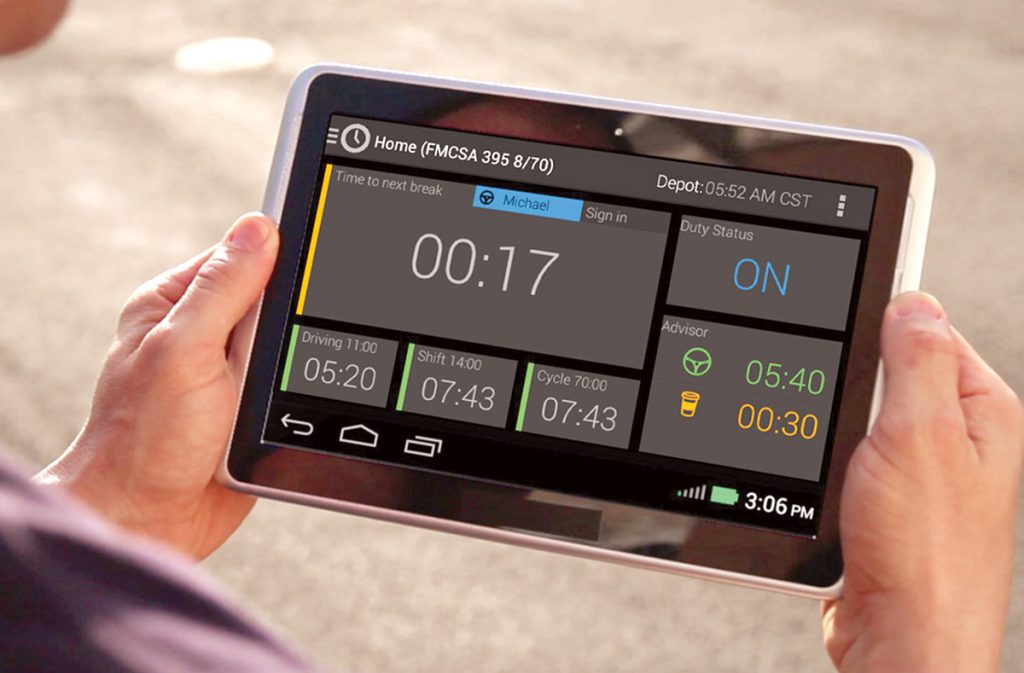
3 Benefits of Telematics for Drivers
- Blog
- Transportation
- 3 Benefits of Telematics for Drivers
Telematics devices for both trucks and trailers can provide plenty of value to drivers and fleet managers alike.
Following our 2017 acquisition of truck telematics providers Blue Tree Systems and inthinc, ORBCOMM was recently featured in two Transport Topics articles focusing on the new Electronic Logging Device (ELD) Mandate regulations from the US Federal Motor Carrier Safety Administration (FMCSA), which from last December 18 requires companies without existing Automated On-Board Recording Devices (AOBRDs) to replace truck drivers’ paper log-books with electronic Hours of Service (HOS) apps. As Christian Allred, ORBCOMM Senior Vice President of International Solution Sales points out, “the need for ELDs will push fleet operators to search for systems that provide economic benefits and not allow the mandate to be a cost to their business” (See ELD Mandate Presents Opportunity to Boost Fuel Efficiency, Technology Vendors Say).
Simply put, telematics devices such as ELDs are a necessity for fleets but that doesn’t mean that they don’t provide carriers with incredible value. Without further ado, here are three benefits of telematics for drivers.
1. Reduced Fuel Costs (Happier Boss!)
As discussed in Fuel Economy in Focus, truck telematics systems play a key role in helping carriers “uncover driver behaviors that contribute to fuel waste, including aggressive driving, idling and speeding. With that information at their disposal, fleets can better coach their drivers and identify opportunities to boost efficiency.” By creating a platform of data-driven coaching where trends can be analyzed, fleets can start to measure growth and improvement within their operations through truck and trailer telematics devices. MPG has long been a key driving performance metric, but it’s not one that can be applied in blanket fashion. Similar to any other vehicle, the make, model and age of the truck, and the type of driving conditions, all have a significant bearing on just how many miles a driver can squeeze from his or her vehicle for every gallon of fuel. Scaling this from one vehicle to an entire fleet, it’s clear how much of an impact this can have on a carrier’s profit margins year after year. Indeed, the trend we notice in this area is to stop judging the driver on MPG achieved but instead work on the actions that cause the result. It’s better to engage with the driver on their unique driving behaviors that are proven to have the biggest effect (positive or negative) on fuel economy (such as aggressive driving and sub-optimal shifting patterns) rather than the end result. By managing these, the driver will achieve the maximum MPG possible under the conditions that he or she was presented with while also improving overall road safety.

Carriers can actually make money by investing in ELDs, through added features designed to enable fuel-economy improvements and other operational efficiencies
2. Improved Driver Performance
The driver is the biggest variable in the performance of a vehicle, but he or she can only do their best in the conditions that they find themselves in. Providing feedback and coaching in a fair and unbiased manner by associating it with objective data allows drivers to understand the behaviors expected and use the guidance provided to maximize performance, creating an opportunity for everyone to work together in delivering huge efficiency gains. When you show a driver his or her score for “anticipation“, for example, and explain how important it is to be a driver that “anticipates” rather than “reacts” to events, the improvement in safety-related incidents as well as performance is dramatic, reducing accidents, boosting truck uptime, improving driver retention and more. The same applies to other metrics such as shifting patterns, use of cruise control, acceleration/deceleration patterns, and speeding profile, all of which can have a huge effect on overall MPG and driver safety. Modern truck telematics technology incorporates sophisticated profiling that allows driver performance expectations to be established at an individual vehicle level which can help provide more accurate vehicle benchmarks to compare with.
3. Better Driver Safety
 Putting a simple performance scoring app in the hands of the driver that provides feedback on his performance at the end of every trip, and advises on how to achieve the expected results, has proven to be the missing piece in the puzzle. Not only does it ensure each vehicle is being driven in a fuel-conscious way, but it also improves fleet safety and results in better trained drivers with heightened awareness. And best of all, much of this stems from the data collected by telematics devices that are now mandated to be within each truck!
Putting a simple performance scoring app in the hands of the driver that provides feedback on his performance at the end of every trip, and advises on how to achieve the expected results, has proven to be the missing piece in the puzzle. Not only does it ensure each vehicle is being driven in a fuel-conscious way, but it also improves fleet safety and results in better trained drivers with heightened awareness. And best of all, much of this stems from the data collected by telematics devices that are now mandated to be within each truck!
What do you think is the key to improving driver performance and fleet efficiency? Any benefits of telematics for drivers that you’ve discovered? Have your say in the comments below…
















